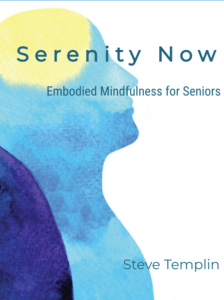Stressful emotions like grief and guilt are powerful bodily experiences. Past conditioning causes us to pull away from painful feelings just as we spontaneously withdraw our hand from a flame.
This tendency to move away from and to avoid strong or painful feelings can actually cause them to persist or intensify. Oftentimes we can be so successful in avoiding emotions that our body and psyche create physical symptoms or physical pain instead.
Ideally, we can learn to let go and trust our heart’s wisdom in helping us to navigate difficult and stressful emotions.
Stressful Emotions and Activating Heart Wisdom
I’m going to suggest a heart-based strategy for helping with stressful emotions from the Neuro-Reset training. This approach can be used to help us find relief from our emotional pain and to derive meaning from it as well.
Feel free to follow the steps below only if you’re are okay doing so. For this beginning exercise choose an emotion that’s not too intense.
With practice, it will become easier and easier for you to allow stronger or more intense emotions to move through with their own natural rhythms while offering you relief and guidance.
This process is designed to be gentle and to enhance an inner sense of safety, so don’t push yourself.
Step One
Bring to mind an issue or problem that triggers a stressful emotion, for example, ‘all about my upcoming dentist visit’. Notice where and how that issue feels in your body, such as, ‘a heaviness or anxious place in my chest’. You can also rate the intensity of your emotional discomfort (1-10). Take one slow breath of 4-6 seconds and let it go.
Step Two
Imagine that you are breathing into and out of your heart — tune into and feel your heart in the center of your chest. Breathe slowly and gently. You can find a rhythm that feels right to you. Just notice what you notice without trying to change, fix, or analyze anything. Notice around your heart as you breathe slowly with the same attitude that you would use sitting patiently with a friend in need of your company. Take another slow breath of 4-6 seconds and let it go.
Step Three
Bring to mind something, someone, or a special place that touches your heart in a positive way — something that feels good. Enjoy the pleasant or warm-hearted feeling. Appreciate it. Soak it up as you breathe slowly. Give yourself 30 seconds or a minute or two if time allows for you to savor, to appreciate your experience. Take another slow breath of 4-6 seconds and let it go.
If you have difficulty bringing to mind a positive heartfelt experience that’s okay. Instead, you could notice a part of your body that gives you a more neutral feeling experience, such as your hands. Simply notice your hands — sensations, tingles, heaviness — just notice your hands while you breathe slowly. Noticing your hands, or your feet, or listening to sounds or pleasant music, is a very different neurological state than thinking about your problem or issue. Take another slow breath of 4-6 seconds and let it go.
Step Four
Now, review step one. Bring your original issue to mind and notice if the intensity level has changed. If you notice a change, a little or a lot, take some time to appreciate the difference. You can continue to repeat the steps above to further support your emotional resiliency.
Heart Wisdom and Healing
The four steps above help us to step out of our ingrained thinking and avoidance patterns while activating our body’s natural mechanisms for healing and wholeness.
The four steps above allow us to activate the middle prefrontal cortex. That’s the part of the conscious brain that has an integrating and balancing influence on the unconscious parts that otherwise contribute to emotional suffering, pain, and illness.
These simple steps also contribute to coherent communication between the heart and brain. Heart and brain coherence balances the autonomic nervous system that’s ultimately responsible for the healthy functioning of your organs.
These integrative steps can bring relief from troubling emotions, as well as improvement in the physical symptoms that may result from suppressed or avoided emotional experience.
Thank you for taking the time in your busy day to read this post.

 Steve is a retired Doctor of Oriental Medicine, Acupuncture Physician, and HeartMath Trauma-Sensitive Certified Practitioner with over 35 years of clinical experience in the fields of Energy Medicine, Energy Psychology, and Biofeedback.
Steve is a retired Doctor of Oriental Medicine, Acupuncture Physician, and HeartMath Trauma-Sensitive Certified Practitioner with over 35 years of clinical experience in the fields of Energy Medicine, Energy Psychology, and Biofeedback. 